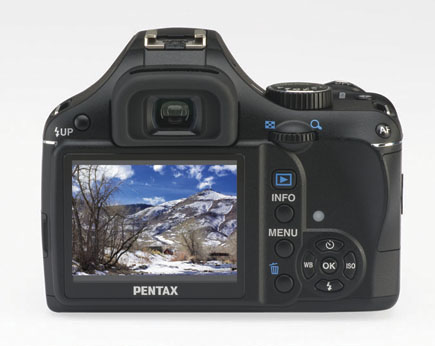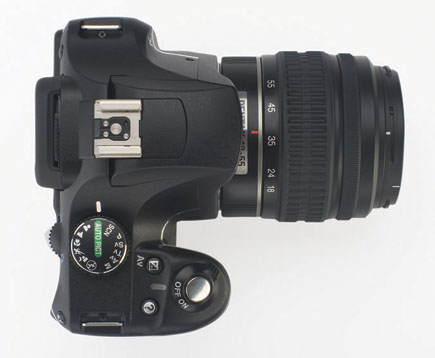The Pentax K2000; A Great Entry-Level D-SLR
Beginning with the launch of the Asahiflex I in 1952, Pentax (PENTAprism refleX) was the first SLR that incorporated a penta-prism viewfinder and reflex mirror. Along the way the company has produced cameras from the legendary LX to the indestructible K1000. This digital age has seen the launch of successors to the K1000 that, like the new K2000, are fully compatible with the 25 million Pentax lenses produced over the past six decades and that number doesn’t even begin to include K-mount lenses from other manufacturers. You might be thanking me for the history lesson but wondering what Pentax has done for you lately. The K2000 is the answer.
 |
The Pentax K2000 is an entry-level D-SLR system consisting of the K2000 body, smc DA L 18-55mm f/3.5-5.6 AL lens, and AF200FG flash bundled together as a kit at an affordable price ($495). The new camera is clearly aimed at people graduating from digital point-and-shoot cameras and looking to expand their photo horizons, which is why one of the K2000’s features is a programmable Help button that explains current camera settings to teach the user about SLR photography. To tailor the camera settings for any photographic situation the D-SLR newcomer might encounter, the K2000 features Auto Picture mode, which selects from Portrait, Landscape, Macro, Action, and Night Portrait modes.
 |
|
|
The compact—it’s one of the smallest D-SLRs around, measuring 4.8x3.6x2.7” and weighing 18.5 oz without batteries or a memory card—but easy to hold K2000 body houses a 10.2-megapixel CCD imaging chip, has a 2.7” LCD preview screen, and uses the time-tested K-mount lens mount system that’s been around since ’75 but clearly updated for a digital millennium. The camera has an effective Dust Removal system that keeps all of the image files spotless. Using the classic “shake your bootie” method, the K2000’s Dust Removal system shifts the image sensor at high speed to vibrate dust particles off it.
 |
 |
The body features the same Shake Reduction technology found on more upscale K-series D-SLRs, bringing Image Stabilization to all the company’s AF digital lenses along with older K-mount offerings. I wasn’t able to test the K2000 using any of the older manual focus lenses but have in the past with other Pentax D-SLRs (search for my K100D review on www.shutterbug.com) and had been impressed with the seamless blending of new and old technology. It offers focus confirmation and automatic exposure while stabilizing these older lenses to produce great-looking photos.
The smc DA L 18-55mm f/3.5-5.6 AL lens that’s included with the Pentax K2000 system is the first of a new series of lenses with the DA L designation that also includes the smc DA L 50-200mm f/4-5.6 ED zoom. Pentax’s Super-Takumar lenses featured an early form of lens coating to prevent flare; it’s also on this new 18-55mm lens. The anti-flare coating performed remarkably well for what has to be an inexpensive lens and lack of a lens hood in the box. Even when shooting under strong backlighting situations, where even the subject remarked at the light reflections on the lens’ surface, the 18-55mm produced flare-free photographs. I tried to use this versatile lens as much as possible during the test and found it to be a workhorse and all-around flexible focal length range, even for portraits.
|
In Camera Effects
|
|
 |
|
|
|
 |
|
|
 |
|
|
|
 |
|
|
- Log in or register to post comments

















































